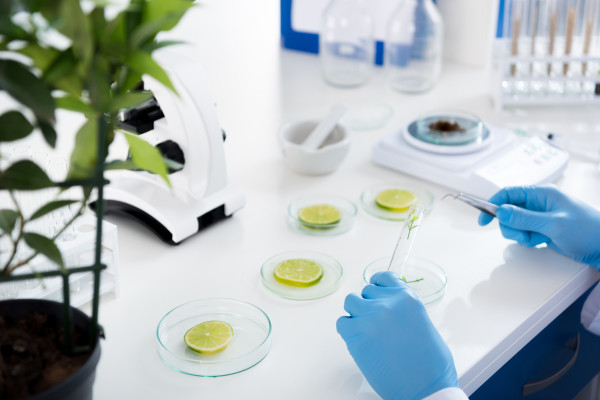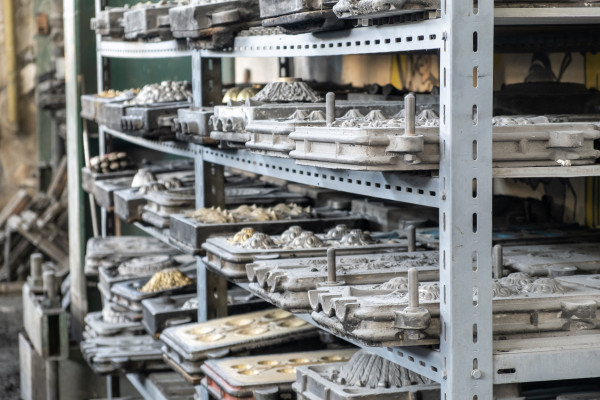
Borrowed Brilliance: How Pet Food Innovates by Looking Outside the Bowl
In the world of pet food, some innovations have become so common that we often overlook their surprising origins. Believe it or not, many of the tools, techniques, and ingredients we now consider standard didn’t come from the pet food industry—they were borrowed and reimagined from industries like space exploration, military technology, and even skincare.
Here are five pet food innovations that are hiding in plain sight, with unexpected backstories from industries you’d never expect.
DHA from NASA Brain Research
Docosahexaenoic acid (DHA) is an essential nutrient for puppies, kittens, and infants, and is utilized by senior pets for its cognitive benefits. But did you know it originated from NASA-funded research?
In the early 1980s, scientists were searching for a nutrient-rich food supply, an oxygen source, and a recycling agent for long-duration space travel. The result was an algae-based, vegetable-like oil. This would later become the foundation for what was known as Formulaid. This algae-based ingredient contains DHA and arachidonic acid, two essential fatty acids found in human milk. This technology was then applied to the pet food industry with the introduction of the ingredient DHAGold.

Photo by LightFieldStudios
Rapid Microbial Testing from the Department of Defense
Food safety is critical in the pet food industry, and rapid microbial detection has become an invaluable tool for ensuring quality and safety. However, rapid testing was originally influenced by the Department of Defense’s (DoD) need to develop rapid, point-of-care diagnostic tests in the late 1990’s to early 2000’s to identify infectious diseases and potential biohazards in deployed personnel.
For example, soldiers can test water and food for contamination while on the battlefield. Fast forward to today, and rapid microbial testing has been adapted for use in pet food manufacturing. This technology helps pet food manufacturers quickly identify harmful pathogens such as Salmonella, E. coli, and Listeria, providing the first line of safety defense for products before they reach store shelves. The speed and accuracy of these testing methods have dramatically reduced the time it takes to bring safe, high-quality pet food to market.
Injection Molding from Early Plastic Innovations
That perfect dental or long-lasting chew for your dog or cat is likely produced through injection molding, a process that involves heating a material until it’s able to be injected into a specifically designed mold.
This manufacturing technique dates back to the 19th century when John Wesley Hyatt and his brother, Isaiah, invented a process for replacing ivory in billiard balls, which resulted in the creation of celluloid, one of the first synthetic plastics. After patenting the first injection molding machine in 1869, it was commercialized and used to make plastic items like buttons, combs, and even collar stays. Now, years later, these machines are still manufacturing everyday items like plastic utensils and functional treats for dogs and cats.

Photo by Rimidolove
Encapsulation from Carbonless Copy Paper
Encapsulation is a key technology in pet food, helping to protect sensitive nutrients like probiotics, Omega-3 fatty acids, and enzymes from the rigors of heat, moisture, and oxidation during processing, storage, and even gastric juices. Surprisingly, the groundwork for controlled nutrient release was laid in the 1950s for carbonless copy paper, where microcapsules were designed to burst under pressure and transfer ink.
Today, that same principle has been reimagined for nutrition. Instead of ink, modern encapsulation uses lipid-based coatings, polymer films, or starch matrices to surround vulnerable ingredients. These coatings act like invisible armor, breaking down only when they reach the optimal location in the digestive system. This not only helps probiotics survive the high heat of extrusion or the long shelf life of dry kibble, but also ensures that Omega-3s and enzymes stay stable and bioavailable. In essence, it’s precision delivery, science ensuring that what you put into a product is actually what the pet gets out of it.
Vacuum Coating from Early Scientific Research and Aluminum Foil Production
Vacuum coating, a process that applies thin functional coatings under vacuum, has roots in 19th-century scientific experiments and aluminum foil production. Initially used to create reflective coatings on optical instruments and mirrors, vacuum coating technology has evolved into a key tool in the food industry.
In pet food manufacturing, it is now used to apply delicate fats, vitamins, and nutrients post-cooking, preserving their potency and quality. By applying coatings in a vacuum environment, manufacturers can protect these sensitive ingredients from heat degradation and ensure that your pet’s food is nutritionally complete. Vacuum coating is especially useful in products like treats, snacks, and dry kibble, where preserving the integrity of fats and flavors is essential for both taste and health benefits.
The Takeaway?
The pet food industry is constantly innovating, often by borrowing, adapting, and refining technologies from other sectors. That’s what makes this industry so exciting—who knows where the next great idea will come from?
Looking to break industry barriers and explore new technologies? Let the experts at BSM Partners assist you in integrating and innovating to elevate your next project.
Follow us on LinkedIn for the latest updates on all things happening here at BSM Partners.
About the Author
Dr. Sydney McCauley is a Board-Certified Companion Animal Nutritionist and earned both her bachelor’s and doctoral degrees at Virginia Tech in Animal and Poultry Sciences. McCauley’s research was in nutritional physiology with a focus on understanding the effects of low birth weight on glucose, fatty acid, carbohydrate, and amino acid metabolism in skeletal muscle and overall metabolic homeostasis during neonatal development.
This content is the property of BSM Partners. Reproduction or retransmission or repurposing of any portion of this content is expressly prohibited without the approval of BSM Partners and is governed by the terms and conditions explained here.